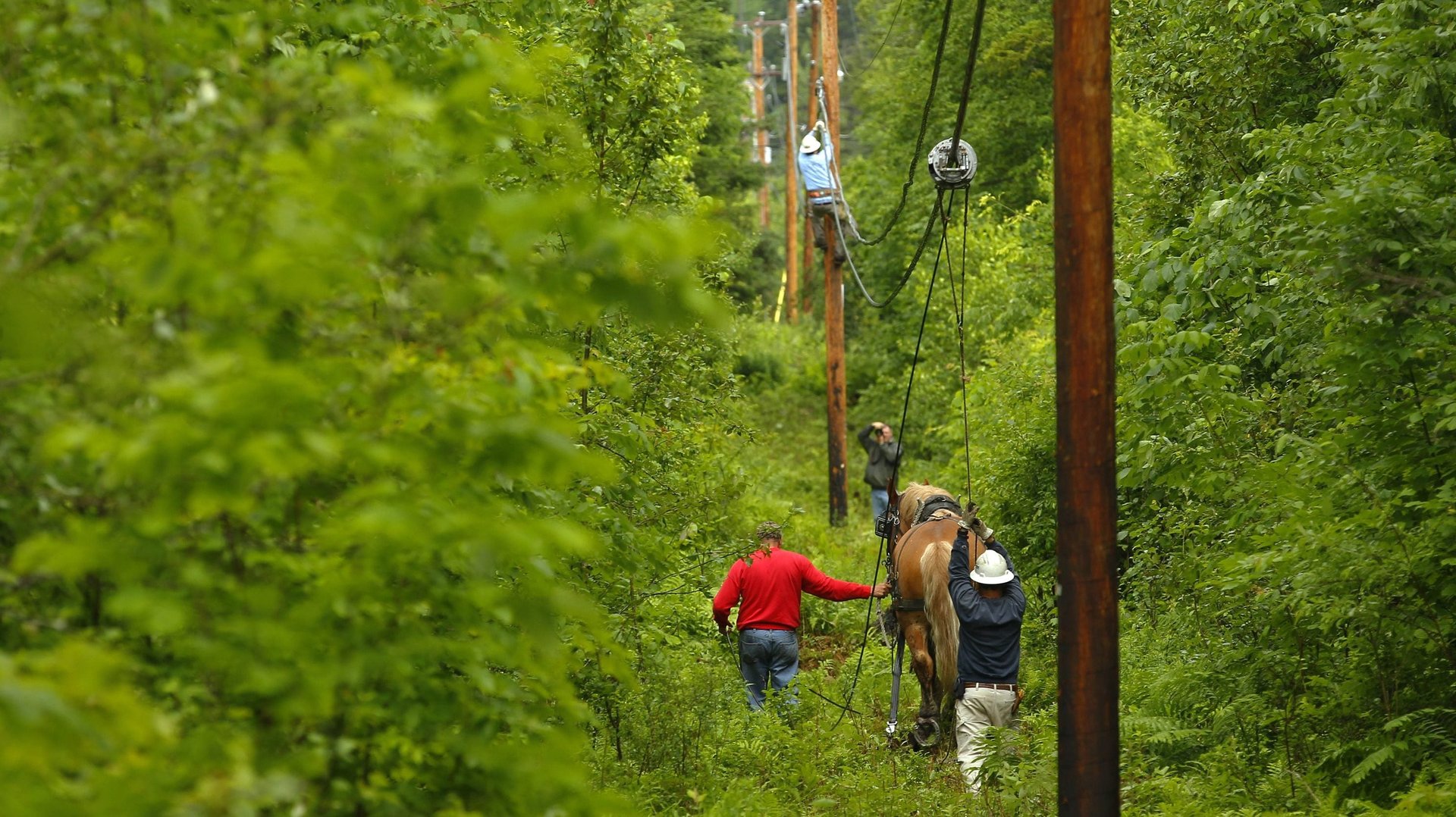The co-ops that electrified Depression-era farms are now building rural internet
In 2017, Mark McKinney decided enough was enough. The head of the Jackson County Rural Electric Membership Corporation in southern Indiana, a co-op that provides electricity to a rural community of 20,000 members, McKinney was still living without a reliable internet connection. No internet service provider would build the infrastructure to get him or his neighbors online.


In 2017, Mark McKinney decided enough was enough. The head of the Jackson County Rural Electric Membership Corporation in southern Indiana, a co-op that provides electricity to a rural community of 20,000 members, McKinney was still living without a reliable internet connection. No internet service provider would build the infrastructure to get him or his neighbors online.
“We realized no one was interested due to the capital expense and limited number of members per mile,” says McKinney, “so the board made the decision to go at it on our own.”
The coronavirus pandemic quickly proved the wisdom of their decision: Thanks to their new fiber optic connection, McKinney and his wife were able to self-quarantine without missing work after they were exposed to the virus. Their son finished the spring semester at home after his university shut down in March. “We could not have done that without this connection,” he said.
Across the rural US, more than 100 cooperatives, first launched to provide electric and telephone services as far back as the 1930s, are now laying miles of fiber optic cable to connect their members to high speed internet. Many started building their own networks after failing to convince established internet service providers to cover their communities.
But while rural fiber optic networks have spread swiftly over the past five years, their progress has been uneven. In North Dakota, for example, fiber optic co-ops cover 82% of the state’s landmass, while Nevada has just one co-op. And in the states where the utilities do exist, they tend to serve the whitest communities.
“There are co-ops that serve predominantly Black families,” said Christopher Mitchell, who studies local broadband networks with the Institute for Local Self-Reliance. “But those co-ops are not doing fiber to the home.” The fiber business model, he explained, generally relies on 50-60% of members signing up to pay $50 a month or more for internet service. “If you look at the kind of poverty we see in the rural Black community, I don’t think we can forecast that level of subscription,” he said.
In Mississippi 13 rural co-ops got state funding last month to build out fiber optic networks, mainly in predominantly white communities. “We were very disappointed with who won those grants,” said Oleta Fitzgerald, a regional administrator for the Southern Rural Black Women’s Initiative. “Only one serves into the Mississippi Delta, where you find the greatest need in terms of accessibility and affordability for schools and telehealth.”
None of these disparities are new for rural co-ops. When the Jackson County electric co-op finally turned the lights on in 1938, each of its neighboring major cities had had electricity for half a century. Fitzgerald, who is 72, still recalls a time when her neighborhood was lit by lanterns, before co-op members like her father brought electricity and running water into town.
She argues that rural co-ops today need a wave of federal funding for fiber optic projects that can reach the poorest communities—much like the funding for power projects that came through the US Department of Agriculture in the 1930s. As part of the New Deal, President Franklin Roosevelt created the Rural Electrification Administration in 1935, which funded over 400 co-ops and brought the percentage of farms with electricity from 10% to 90% over the next two decades.
“If the USDA had not put that infusion of capital into electricity to make it cost effective and make it available for poor families, a lot of people might not have lights,” Fitzgerald said. “We think rural electric power associations are primed [to connect members to the internet], but it’s got to be subsidized like wiring America was.”
While there is no unified federal fiber funding program, the USDA has been funding a patchwork of projects through other grants. The Jackson County network, for example, was funded through a $74 million USDA loan under a “smart grid” program. The primary purpose of the fiber system was to reduce peak utility costs for its members—granting them internet access has been a happy side effect, McKinney said.
So far, the project has brought 4,000 households online. “The guys that go out and do the installs every day get to see the members’ faces when they get connected,” said McKinney. “I can only compare it to what it was like when electricity was provided for the very first time and they turned on the light bulb.”